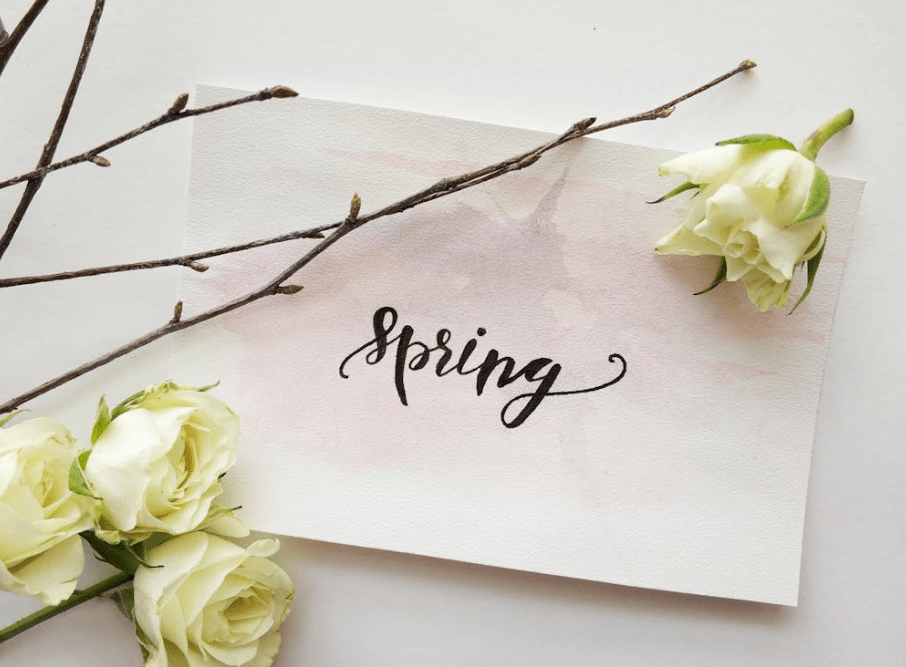Currently Empty: ₨0.00

July 21, 2024
0 Comments
Hand Lettering Guide For Beginners
Are you fascinated by beautifully crafted letters and words that seem to dance off the page? If so, hand lettering might be your next favorite hobby! Whether you’re looking to spruce up your journal, create unique greeting cards, or relax with a creative outlet, hand lettering is a fantastic skill to learn. Here’s a simple hand lettering guide to get you started:
What is Hand Lettering?
Hand-drawn lettering has surged back into popularity alongside the DIY movement. Despite the convenience of digital typing, people are enthusiastically rediscovering this ancient art form.
You can find many hand lettering guides where enthusiasts share techniques and tutorials. Many find these videos soothing, drawn to the artistry of hand-drawn letters that allow for boundless creativity.
Hand lettering is the artistic practice of drawing letters by hand. It allows artists to interpret letters uniquely and imaginatively, making each project personal. From wedding invitations to home decor and social media posts, hand lettering decorates our lives with diverse styles, shapes, and forms.
But what distinguishes hand lettering from calligraphy? While both involve letter forms, they differ fundamentally in execution:
Hand Lettering verses Calligraphy
Calligraphy involves writing letters with specific tools, such as a calligraphy pen, focusing on precise strokes and letter forms. In contrast, hand lettering artists draw each letter individually, allowing for more artistic freedom and variation.
Within calligraphy, there’s brush calligraphy—a technique popular in Chinese culture and akin to brush painting. This ancient art form uses brush pens to create flowing, expressive strokes. Brush lettering emphasizes heavy pressure on downward strokes, and light touches on upward strokes, evoking a dynamic sense of movement and grace.
In essence, hand lettering celebrates the artistry of drawing letters, while calligraphy emphasizes the skill of writing them. Both are rooted in tradition yet open to endless creative exploration in today’s vibrant artistic landscape. Whether you’re drawn to the precision of calligraphy or the expressive freedom of hand lettering, both offer rich opportunities for artistic expression and personal creativity.
Hand Lettering Guide for Beginners
Let’s take you through a step-by-step hand lettering guide for beginners.
Getting Started
Gather Your Tools: To begin your hand lettering journey, you’ll need some basic supplies:
Pens and Markers: Start with various pens and markers in different sizes and colors. Brush pens are trendy for creating elegant letterforms.
Paper: Choose smooth, thick paper to prevent bleeding and feathering of ink. Experiment with different types of paper to find what works best for you.
Ruler and Pencil: This helps sketch out guidelines until you become more comfortable with freehand lettering.
Learn the Basics:
Lettering Styles: Explore different styles such as serif, sans-serif, script, and block letters. Each style has its unique characteristics and lends itself to different applications.
Stroke Techniques: Understanding basic stroke techniques is essential. Practice upstrokes, downstrokes, and varying pressure to achieve different line widths and effects.
Follow Tutorials: There are plenty of resources available online and in books that provide step-by-step instructions and practice sheets for beginners. These tutorials will help you grasp fundamental concepts and improve your lettering skills over time.
Tips for Beginners
Start Simple: Begin with basic alphabets and words before progressing to more complex designs. Focus on mastering one style at a time.
Practice Regularly: Like any skill, practice makes perfect! Dedicate a few minutes each day to practicing your lettering. Consistency is critical to improvement.
Experiment with Styles: Don’t be afraid to experiment with different styles and techniques to discover what resonates with you. Your lettering style should reflect your personality and creativity.
Take Breaks: Hand lettering can be intricate work. Take breaks to rest your hands and avoid strain, especially when working on longer projects.
Where to Use Hand Lettering
Once you’ve honed your skills, there are countless ways to incorporate hand lettering into your life:
Greeting Cards and Invitations: Create personalized cards for birthdays, weddings, holidays, and other special occasions. Hand-lettered invitations add a unique touch to any event.
Home Decor: Design custom wall art, framed quotes, or decorative signs for your home or workspace.
Journals and Planners: Add flair to your journal entries, planners, and bullet journals. Hand lettering can help you stay organized in style.
Gifts: Hand lettering makes for thoughtful and memorable gifts: Personalize mugs, notebooks, or T-shirts for friends and family.
Advanced Techniques
As you become more confident in your hand lettering skills, you can explore advanced techniques to elevate your designs:
Embellishments: Experiment with flourishes, swirls, and decorative elements to enhance your lettering compositions.
Color Blending: Use brush pens or watercolors to create stunning color gradients and blends within your letterforms.
Digitization: Learn how to digitize your hand lettering using software or apps. It allows you to edit, resize, and share your designs digitally.
Maintaining Your Practice
Join Communities: Connect with fellow hand lettering enthusiasts online or in local workshops. Sharing tips, feedback, and inspiration can accelerate your learning journey.
Set Goals: Challenge yourself with specific goals, such as mastering a new lettering style or completing a project within a set timeframe.
Stay Inspired: Draw inspiration from art, nature, typography, and everyday life. Keeping an inspirational journal or mood board can help spark creativity when you’re stuck.
Conclusion
Hand lettering is more than just a hobby—it’s a form of self-expression and creativity that can bring joy and satisfaction. Whether you’re a complete beginner or looking to refine your skills, the journey of learning hand lettering is as rewarding as the finished product itself. So, gather your pens, pick up some paper, and embark on your hand-lettering adventure today! With practice and patience, you’ll soon be crafting beautiful letters that captivate and inspire.
Remember, the key to mastering hand lettering lies in dedication, experimentation, and a willingness to learn from successes and mistakes. Embrace the process, enjoy the journey, and let your creativity flow freely through each pen stroke.
Explore our Envelopes & letter papers selection to enhance your hand-lettering creations further!

